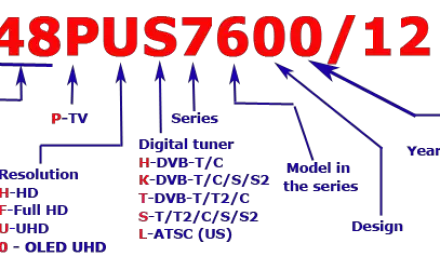Ducted Fan Design Software
How do I locate my model number: All Vizio products (other than passive glasses and remotes) have a model number stated on them. This can be found either on the original box the item was purchased in, on a sticker with a bar code, or in the following places below, depending on the device. 
A ducted fan is an air moving arrangement whereby a mechanical fan, which is a type of propeller, is mounted within a cylindrical shroud or duct. The duct reduces losses in thrust from the tips of the propeller blades, and varying the cross-section of the duct allows the designer to advantageously affect the velocity and pressure of the airflow according to Bernoulli's principle. Ducted fan propulsion is used in aircraft, airships, airboats,[dubious]hovercraft and fan packs.[1]
Notes on ducted fan design - by - R. Turner In general, conventional compressor stages are designed by the cascads method, while high stagger low solidity ductcd fans are designed on modified isolated aerofoil theory. The purpose of these nptes is to. Ducted Fan Design (2001Ed.) Return to Mass Flow page Return to Autodidactics Home Page Email Link. How to order:Send check made out to 'Mass Flow' for $49.95 + $3 s&h ($6 outside North America) to. DOUBLE DUCTED FAN (DDF) By Cengiz Camci and Ali Akturk A technology description document. This is clearly an o -design condition for an axial ow fan that is designed for a reasonably uniform inlet axial velocity pro le in the spanwise 5. The immediate results of any inlet. AVID designs ducted fan propulsors for all types of vehicles - from backpackable hovering UAVs, to fixed wing HALE concepts. The fan design considers aerodynamic, acoustic performance, and structural considerations for a balanced, optimized design that can be tailored to the customer's specifications and priorities.
A jet fan is a stationary ducted fan used to move air through buildings or tunnels.[2][3]
Ducted fans normally have more and shorter blades than conventional propellers and thus can operate at higher rotational speeds.[dubious]
Applications[edit]
In aircraft applications, the operating speed of an unshrouded propeller is limited since tip speeds approach the sound barrier at lower speeds than an equivalent ducted fan. The most common ducted fan arrangement used in full-sized aircraft is a turbofan engine, where the power to turn the fan is provided by a gas turbine. High bypass ratio turbofan engines are used on nearly all civilian airliners, while military fighters usually make use of the better high-speed performance of a low bypass ratio turbofan with a smaller fan diameter. However, a ducted fan may be powered by any source of shaft power such as a reciprocating engine, Wankel engine, or electric motor. A kind of ducted fan, known as a fantail or by the trademark name Fenestron, is also used to replace tail rotors on helicopters. Ducted fans usually have an odd number of blades to prevent resonance in the duct.[citation needed]
Ducted fans are favored in VTOL aircraft such as the Lockheed Martin F-35 Lightning II, and other low-speed designs such as hovercraft for their higher thrust-to-weight ratio.
In some cases, a shrouded rotor can be 94% more efficient than an open rotor. The improved performance is mainly because the outward flow is less contracted and thus carries more kinetic energy.[4]
Among model aircraft hobbyists, the ducted fan is popular with builders of high-performance radio controlled model aircraft. Internal-combustion glow engines combined with ducted-fan units were the first achievable means of modeling a scaled-size jet aircraft. Despite the introduction of model-scale turbojet engines, electric-powered ducted fans remain popular on smaller, lower-cost model aircraft. Some electric-powered ducted fan airplanes can reach speeds of more than 320km/h (200mph).
Free online new mahjong games. Most types of fans used in computers contain a duct integrated into the fan assembly; the duct is also used for mechanically mounting the fan to other components.
Advantages[edit]
- By reducing propeller blade tip losses, the ducted fan is more efficient in producing thrust than a conventional propeller of similar diameter, especially at low speed and high static thrust level (airships, hovercraft).
- By sizing the ductwork appropriately, the designer can adjust the fan to allow it to operate more efficiently at higher air speeds than a propeller would.
- For the same static thrust, a ducted fan has a smaller diameter than a free propeller, allowing for smaller equipment.
- Ducted fans are quieter than propellers: they shield the blade noise, and reduce the tip speed and intensity of the tip vortices both of which contribute to noise production.
- Ducted fans can allow for a limited amount of thrust vectoring, something normal propellers are not well suited for. This allows them to be used instead of tiltrotors in some applications.
- Ducted fans offer enhanced safety on the ground.
Disadvantages[edit]
Ducted Fan Design Software For Windows
- Less efficient than a propeller at cruise (at lower thrust level).
- Good efficiency requires very small clearances between the blade tips and the duct.
- Requires high RPM and minimal vibration.
- Complex duct design, and weight increase even if constructed from advanced composites.
- At high angle of attack, parts of the duct will stall and produce aerodynamic drag.[5]
See also[edit]
Ducted Fan Design Software For Sale
References[edit]
- ^Technology Review: Fan pack
- ^'Jet fans'. Airblast. Retrieved March 22, 2019.
- ^(Tony) Enright, P.A. (2014). 'Impact of jet fan ventilation systems on sprinkler activation'. Case Studies in Fire Safety. 1: 1–7. doi:10.1016/j.csfs.2013.11.002. ISSN2214-398X.
- ^Pereira, Jason L. Hover and wind-tunnel testing of shrouded rotors for improved micro air vehicle design p147+p11. University of Maryland, 2008. Accessed: 28 August 2015.
- ^Jon Longbottom - Mechanical aeronautics, thesis in PDF format